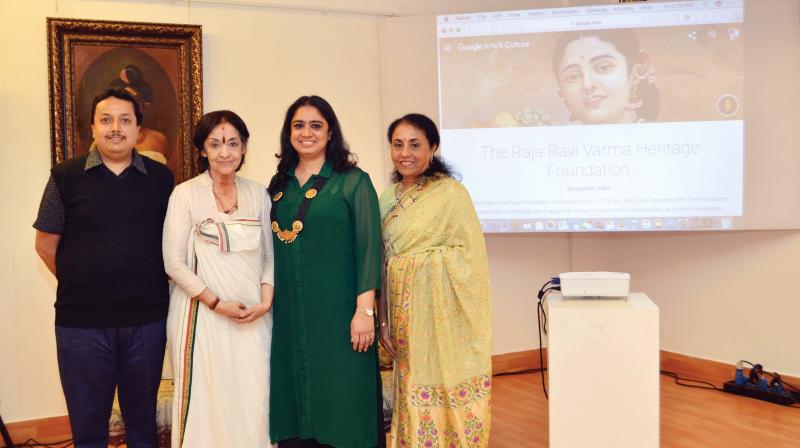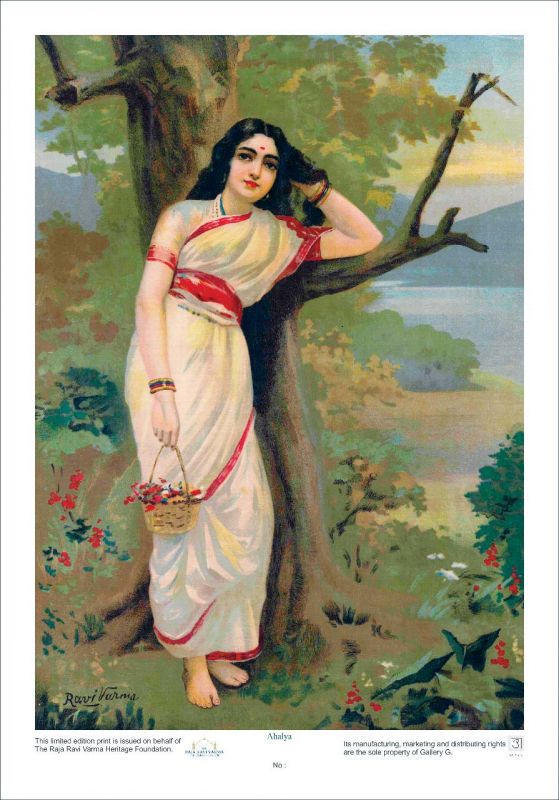Google expands Raja Ravi Varma's universe
The virtual collection brings one of the icons of Indian art history to life with cutting edge technology, including Google's Gigapixel art camera.

Bengaluru: Running a Google search for Raja Ravi Varma, or trawling through the Art and Culture app, will now take you straight to the largest virtual collection of his lithographs, curated and put together by the Raja Ravi Varma Heritage Foundation in what is one of their biggest collaborations. “We wanted to take it a level higher, from reality to virtual reality because art shouldn't be restricted to geographical borders," said Gitanjali Maini, one of the founders of the Raja Ravi Varma Foundation and an integral cog in the reappearance of his great-granddaughter, Rukmini Varma's foray back into society. "We were flooded with requests from galleries everywhere to bring the Raja Ravi Varma exhibition to different parts of the world but this wasn't always possible. At the same time, we don't want people to miss out on one of India's greatest artists."
It is one of the youngest foundations and the 50th from India to be part of Google's prestigious Art and Culture platform, alongside celebrated museums like the Louvre and the Metropolitan Museum of Modern Art. The virtual collection brings one of the icons of Indian art history to life with cutting edge technology, including Google's Gigapixel art camera. 131 out of the 132 known lithographs are part of the Art and Culture repertoire. The collaboration was announced at Gallery G on Lavelle Road, the epicentre of the Raja Ravi Varma Heritage Foundation on Friday. The Foundation, which was established in 2015 to uphold Varma's legacy, is the brainchild of his great granddaughter, Princess Rukmini Varma of the Travancore Estate, art connoisseur and curator Gitanjali Maini, reputed collector Ganesh V Shivaswamy and acclaimed jewellery historian Usha Balakrishnan.

The exhibition at NGMA Bengaluru was recreated at Maini's Gallery G for Google. "A lot went into the research as well, we looked into the original Dharmashastra and iconographic descriptions of the time, as well as how the image moves on and was crystallised by Rukmini Varma. It's a very academic exhibition," said Shivaswamy, who is also the Honorary Secretary of the Foundation. The 'Museum View', one of the highlights of the collection, is an in-depth take on the lithograph collection. The user can zoom into the image of his or her choice and see it in far greater detail with the naked eye, than when one is actually standing at a museum, explained Shivaswamy. This was done with a giga pixel art camera, developed by Google back in 2016. "We created a dark room and the team from Google took about 45 minutes to capture a single lithograph," he said.
The lithographs have also been categorised under different headings, putting them in context with various aspects of Varma's life and the time in which he lived. "The apsaras, for instance, have a category of their own," said Shivaswamy, scrolling through images of Urvashi, Tilothamma and Menaka, all staples in Varma's art. A collection of calendars ranging between 1946 and 1950, all taken from Gitanjali Maini's personal collection, are also part of the Google collaboration; every image contains a little footnote on history - tracing, for instance, the evolution of the Madras Presidency into the Madras state. "He was a master painter, who was influenced by the Flemish masters," said Rukmini Varma. "However, it was the lithographs that brought him to the masses, making him vastly different from his Western inspirations."
Raja Ravi Varma was a pioneer in many ways: He was so celebrated, even at the highest levels of society, that he shifted focus from patron to painter, making art a respectable profession in India. He was also the first to want to reach out to the masses, which he did by setting up the Raja Ravi Varma Printing Press in 1899, where scenes from the epics were etched in stone and distributed widely across the country.What sets the paintings apart from the lithographs? "My great grandfather was criticised for using the Flemish masters as an inspiration, for aping the west, but oil painting has a methodology of its own, one that he used for his own vision," said Rukmini Varma. The layering of the plaster, the texture of skin and fabric - these exist only in the original works. The lithographs, however, have their own value - they brought Ravi Varma to the masses, setting him apart from other Flemish masters, who still remain confined to palaces and churches."
Raja Ravi Varma died in 1906, at the age of 58, in Kilimanoor, his ancestral home. By this time, his reputation knew no bounds - every Indian home now contained a Ravi Varma painting, much to the disapproval of the intellectual elite.In 1899, he founded, at great expense, according to the film by the Raja Ravi Varma Heritage Foundation, a printing press in Ghatkopar, Mumbai, where he reproduced scenes from the epics. Business not being his forte, the press was shut down in 1901 although his legacy was simply too strong to erase. These lithographs were printed in the thousands even after his death. If it wasn't for his great-granddaughter Rukmini Varma and curator Gitanjali Maini, the new age digi-obsessed world would have been deprived of the invaluable works of the Artist-King.

